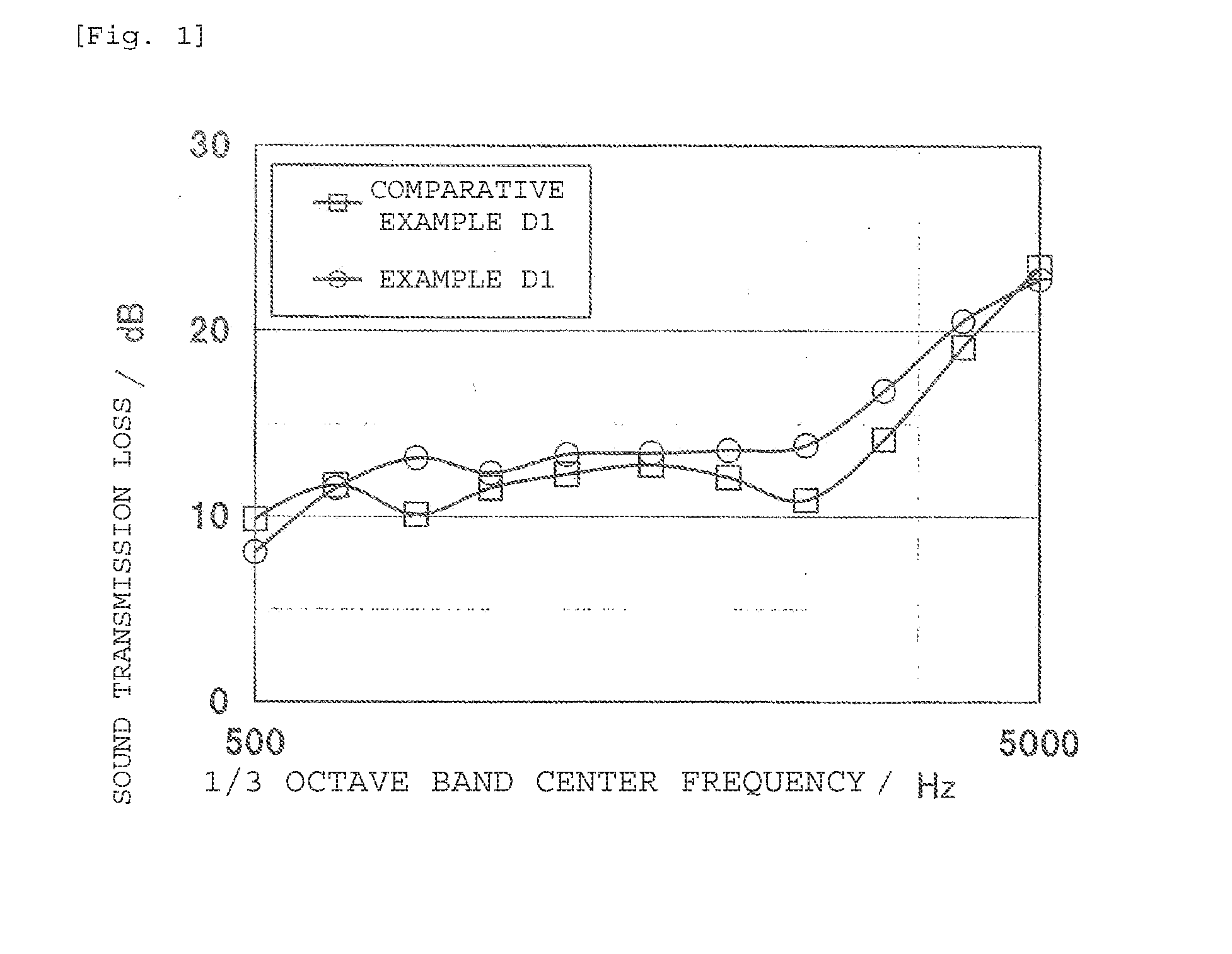Ethylene alpha-olefin non-conjugated polyene copolymer, use thereof, and manufacturing method thereof
a technology of alpha-olefin and polyene, which is applied in the direction of other chemical processes, chemistry apparatuses and processes, etc., can solve the problems of low polymerization activity, short catalyst life, and low productivity, and achieve excellent processing performance, high level, and balanced manner
- Summary
- Abstract
- Description
- Claims
- Application Information
AI Technical Summary
Benefits of technology
Problems solved by technology
Method used
Image
Examples
examples
[0760]For the present invention 1, the present invention will be described below more in detail by use of Examples, but the present invention 1 is not to be limited to these Examples.
[0761]Structures of a bridged metallocene compound and a precursor thereof were determined by measuring the 1H NMR spectrum (270 MHz, JEOL LTD., GSH-270), FD-mass (hereinafter, FD-MS) spectrum (JEOL LTD., SX-102A) and the like.
[0762]A component of the bridged metallocene compound, η5-octamethyloctahydrodibenzofluorenyl group represents a 1,1,4,4,7,7,10,10-octamethyl-(5a,5b,11a,12,12a-η5)-1,2,3,4,7,8,9,10-octahydrodibenzo[b,h]fluorenyl group. Therefore, for example, [bis(4-methylphenyl)methylene(η5-cyclopentadienyl) (η5-octamethyloctahydrodibenzofluorenyl)]hafnium dichloride represents a structure of the following formula.
[0763]Properties / characteristics of the ethylene / α-olefin / non-conjugated polyene copolymer were measured in the following manner.
[Ethylene Content, Propylene Content, ENB Content of the...
synthesis example a1
Synthesis of [bis(4-methylphenyl)methylene(η5-cyclopentadienyl) (η5-2,3,6,7-tetramethylfluorenyl)]hafnium dichloride
(i) Synthesis of bis(4-methylphenyl) (cyclopentadienyl) (2,3,6,7-tetramethylfluorenyl)methane
[0772]In nitrogen atmosphere, to a 100 ml three-neck flask, 30 ml of dehydrated t-butylmethyl ether, and 0.725 g (3.26 mmol) of 2,3,6,7-tetramethylfluorene were introduced. To this solution, in an ice water bath, 2.05 ml (3.34 mmol) of a hexane solution of n-butyllithium (1.63 M) was dropwise added over a period of 5 minutes. The mixture was stirred at 40° C. for 2 hours. 0.893 g (3.46 mmol) of 6,6-bis(4-methylphenyl)fulvene was added. The mixture was stirred under reflux for 15 hours. To the reaction solution, a saturated aqueous ammonium chloride solution was introduced to separate the organic layer. The aqueous layer was subjected to extraction with 100 ml of hexane and 100 ml of toluene. The extract combined with the organic layer previously obtained was washed with water a...
synthesis example a2
Synthesis of [bis(4-methoxyphenyl)methylene(1-cyclopentadienyl) (η5-2,3,6,7-tetramethylfluorenyl)]hafnium dichloride
(i) Synthesis of 6,6-bis(4-methoxyphenyl)fulvene
[0777]In nitrogen atmosphere, to a 500 ml three-neck flask, 8.28 g (115 mmol) of lithium cyclopentadienide, and 200 ml of dehydrated THF were added. With the mixture cooled in an ice bath, 13.6 g (119 mmol) of DMI was added. The mixture was stirred at room temperature for 30 minutes. Thereafter, 25.3 g (105 mmol) of 4,4′-dimethoxybenzophenone was added. The mixture was stirred under heat refluxing for 1 week. With the mixture cooled in an ice bath, 100 ml of water was gradually added, and further, 200 ml of dichloromethane was added. The mixture was stirred at room temperature for 30 minutes. The resultant two-layer solution was transferred to a 500 ml separating funnel. The organic layer was washed three times with 200 ml of water. The organic layer washed was dried with anhydrous magnesium sulfate for 30 minutes. Therea...
PUM
| Property | Measurement | Unit |
|---|---|---|
| temperatures | aaaaa | aaaaa |
| mass ratio | aaaaa | aaaaa |
| composition | aaaaa | aaaaa |
Abstract
Description
Claims
Application Information
 Login to View More
Login to View More - R&D
- Intellectual Property
- Life Sciences
- Materials
- Tech Scout
- Unparalleled Data Quality
- Higher Quality Content
- 60% Fewer Hallucinations
Browse by: Latest US Patents, China's latest patents, Technical Efficacy Thesaurus, Application Domain, Technology Topic, Popular Technical Reports.
© 2025 PatSnap. All rights reserved.Legal|Privacy policy|Modern Slavery Act Transparency Statement|Sitemap|About US| Contact US: help@patsnap.com



